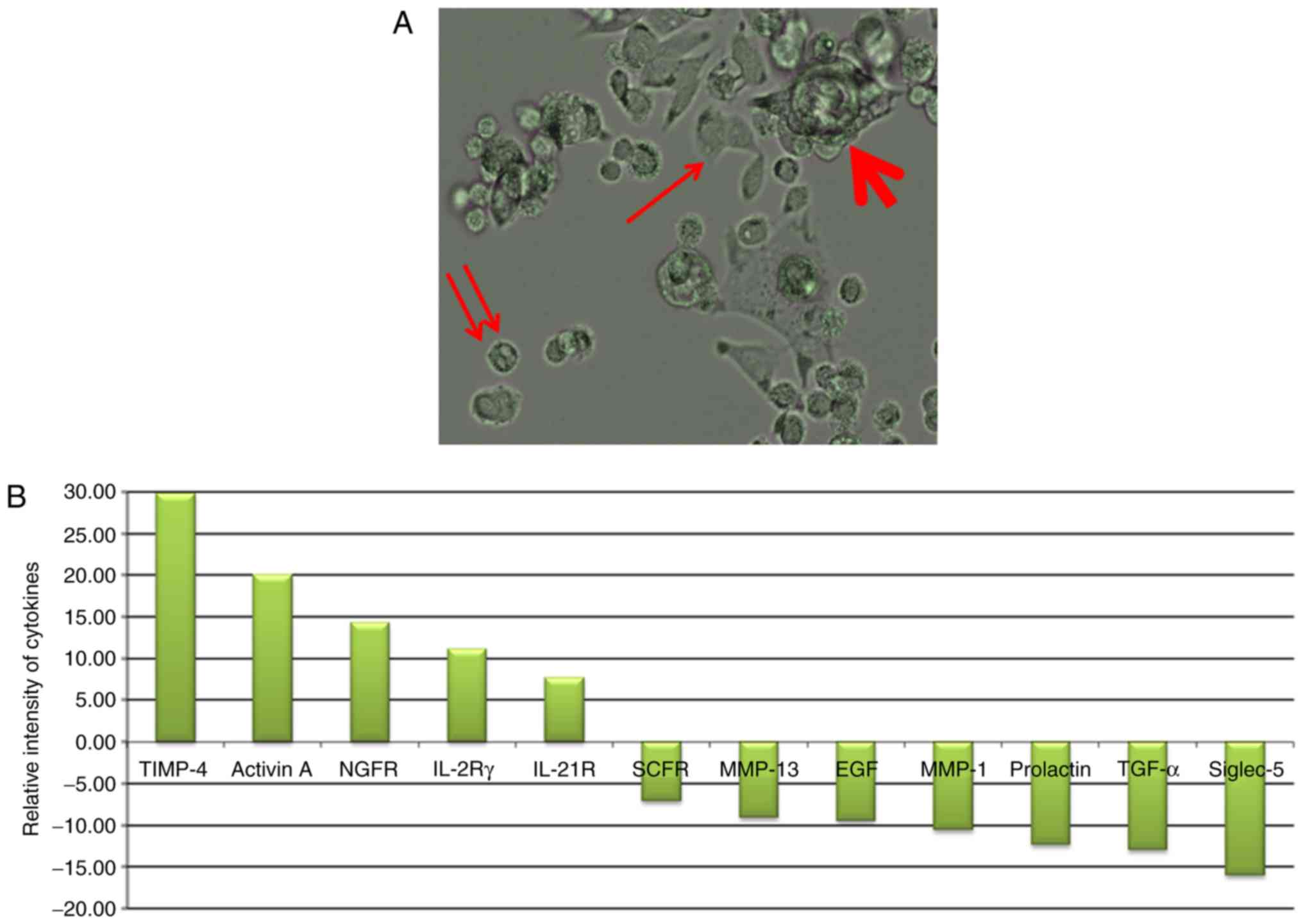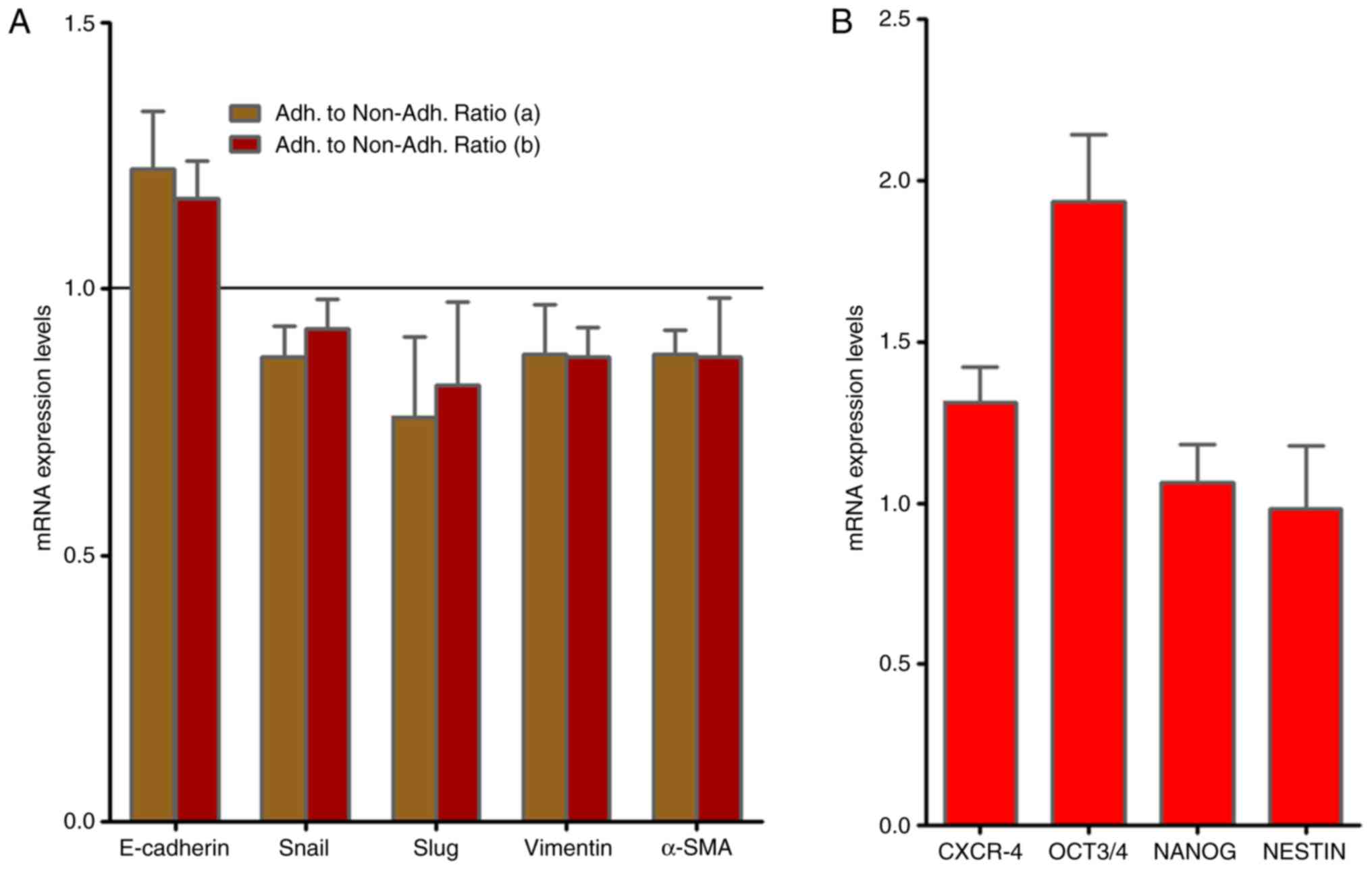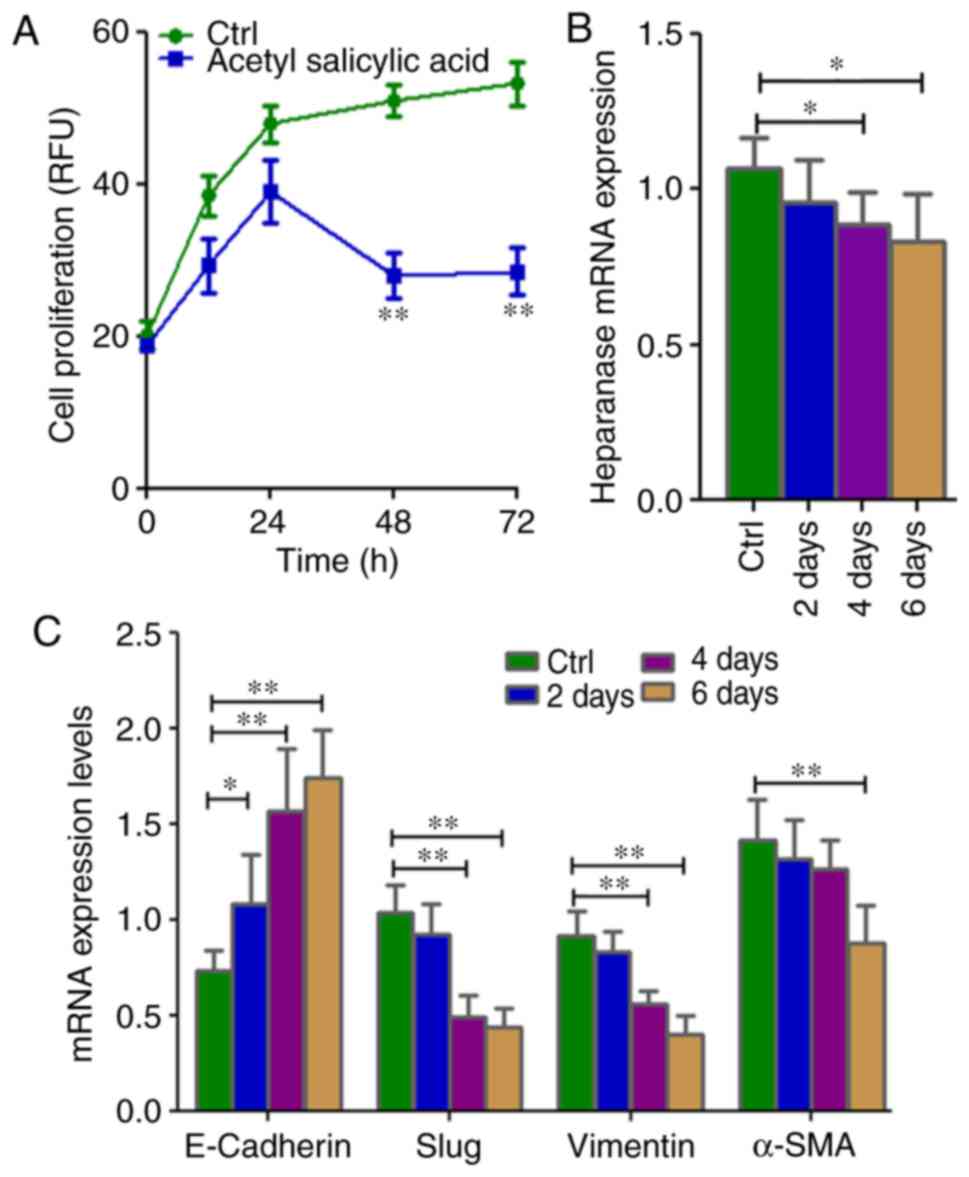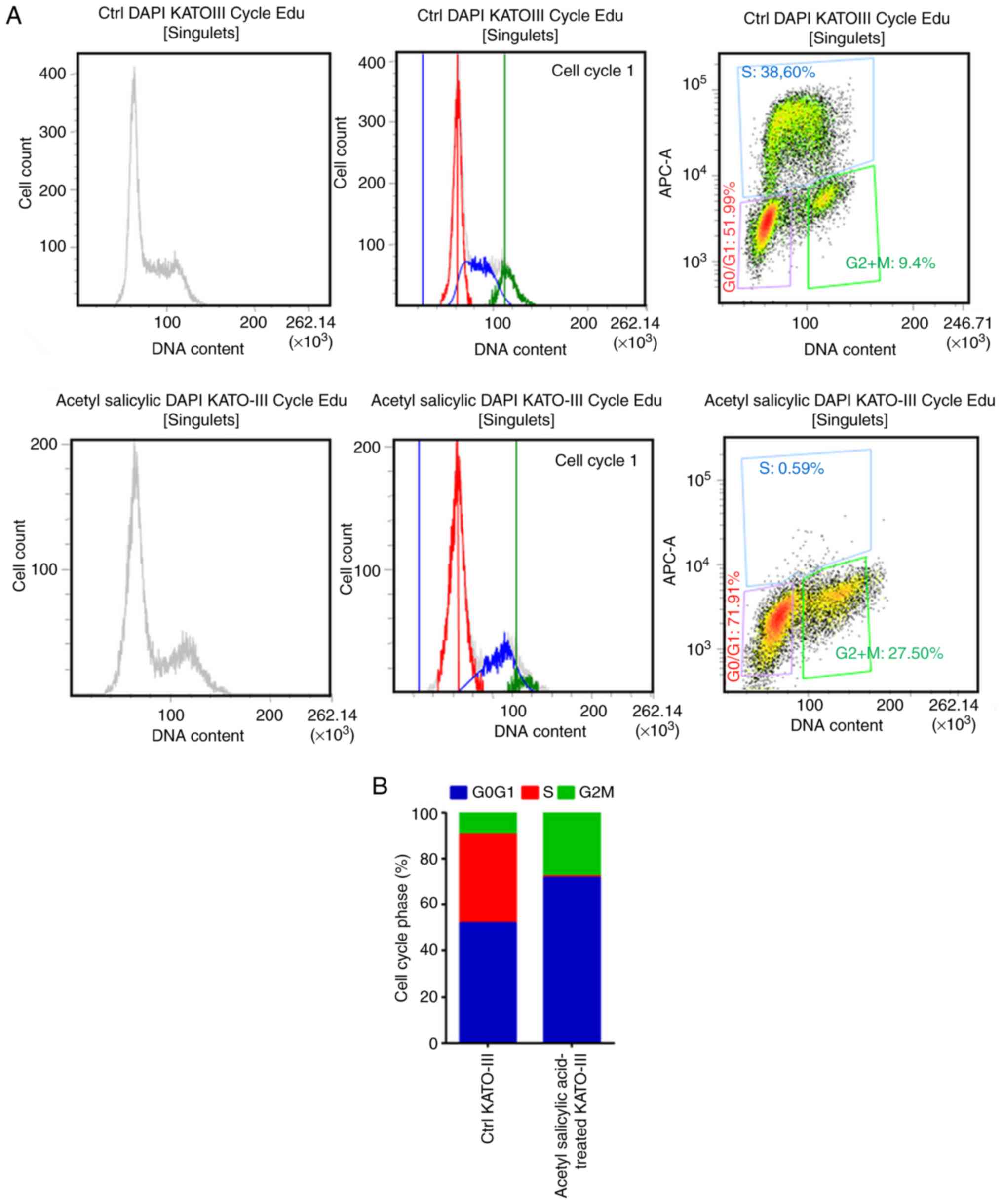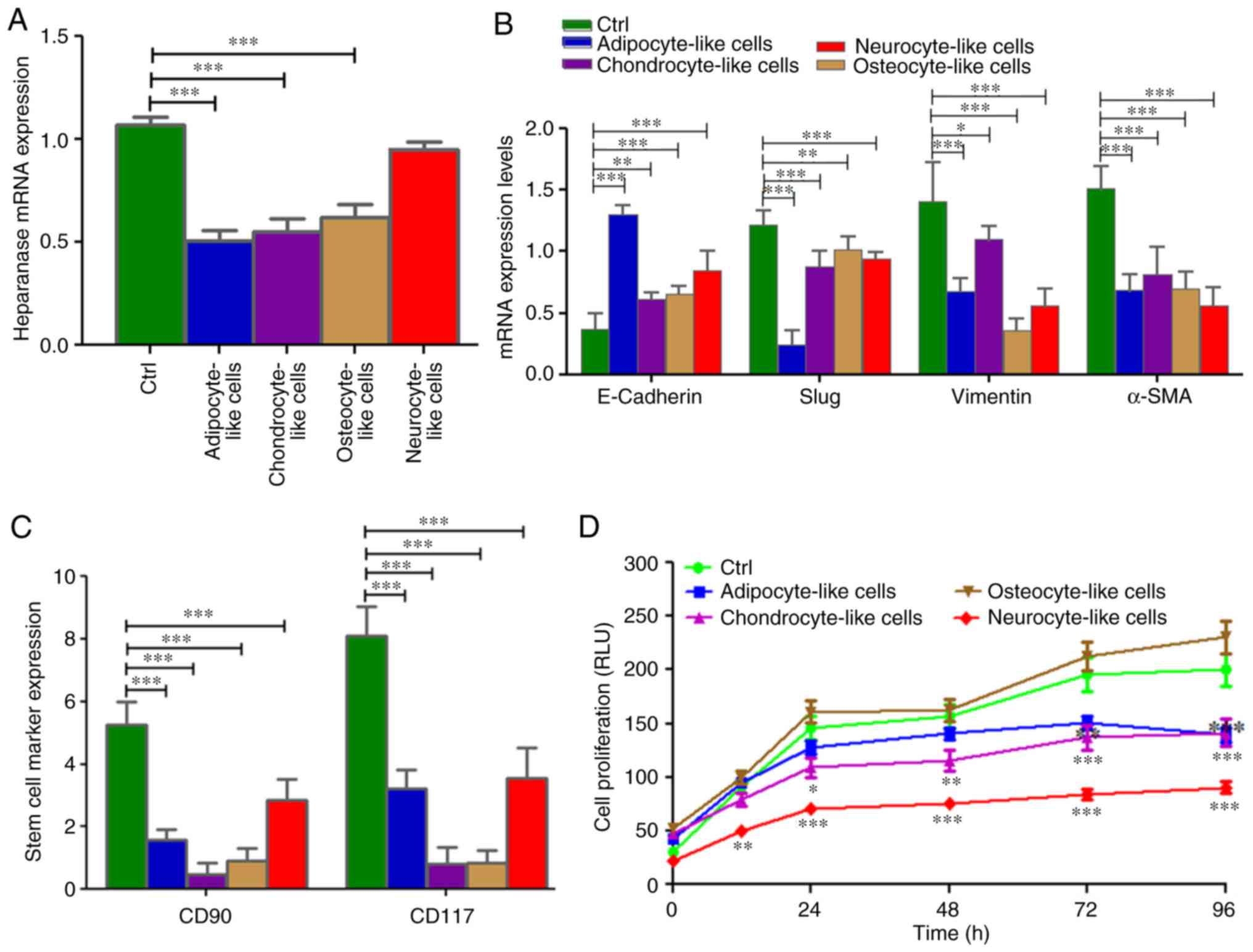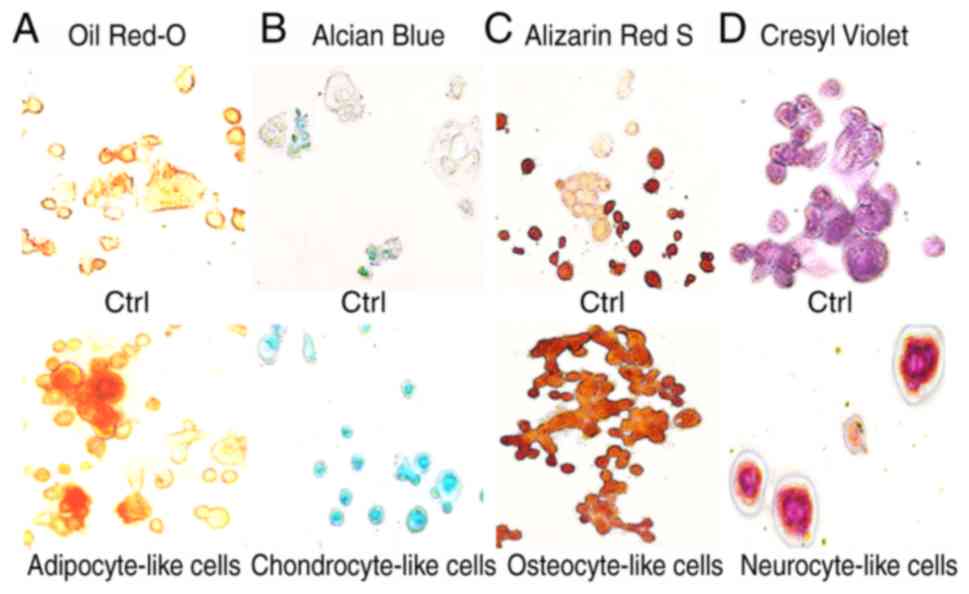|
1
|
Hu B, El Hajj N, Sittler S, Lammert N,
Barnes R and Meloni-Ehrig A: Gastric cancer: Classification,
histology and application of molecular pathology. J Gastrointest
Oncol. 3:251–261. 2012.PubMed/NCBI
|
|
2
|
Endo K, Maehara Y, Ichiyoshi Y, Kusumoto
T, Sakaguchi Y, Ohno S and Sugimachi K: Multidrug
resistance-associated protein expression in clinical gastric
carcinoma. Cancer. 77 (Suppl 8):1681–1687. 1996. View Article : Google Scholar : PubMed/NCBI
|
|
3
|
Maehara Y, Sakaguchi Y, Moriguchi S, Orita
H, Korenaga D, Kohnoe S and Sugimachi K: Signet ring cell carcinoma
of the stomach. Cancer. 69:1645–1650. 1992. View Article : Google Scholar : PubMed/NCBI
|
|
4
|
Shah S, Fourgeaud C, Derieux S, Mirshahi
S, Contant G, Pimpie C, Lo Dico R, Soria J, Pocard M and Mirshahi
M: The close relationship between heparanase and epithelial
mesenchymal transition in gastric signet-ring cell adenocarcinoma.
Oncotarget. 9:33778–33787. 2018. View Article : Google Scholar : PubMed/NCBI
|
|
5
|
Liu YX, Feng JY, Sun MM, Liu BW, Yang G,
Bu YN, Zhao M, Wang TJ, Zhang WY, Yuan HF and Zhang XD: Aspirin
inhibits the proliferation of hepatoma cells through controlling
GLUT1-mediated glucose metabolism. Acta Pharmacol Sin. 40:122–132.
2018. View Article : Google Scholar : PubMed/NCBI
|
|
6
|
Ducros E, Mirshahi S, Azzazene D,
Camilleri-Broët S, Mery E, Al Farsi H, Althawadi H, Besbess S,
Chidiac J, Pujade-Lauraine E, et al: Endothelial protein C receptor
expressed by ovarian cancer cells as a possible biomarker of cancer
onset. Int J Oncol. 41:433–440. 2012. View Article : Google Scholar : PubMed/NCBI
|
|
7
|
Kaci R, Shahid S, Réa L, Philipe B, Amu T,
Marc P and Massoud M: Neural signature expressed by cells from
ovarian carcinoma (A Case Report). Immunochem Immunopathol.
1:22015. View Article : Google Scholar
|
|
8
|
Flynn PJ, Miller WJ, Weisdorf DJ, Arthur
DC, Brunning R and Branda RF: Retinoic acid treatment of acute
promyelocytic leukemia: In vitro and in vivo observations. Blood.
62:1211–1217. 1983.PubMed/NCBI
|
|
9
|
de Thé H Pandolfi PP and Chen Z: Acute
promyelocytic leukemia: A paradigm for oncoprotein-targeted cure.
Cancer Cell. 32:552–560. 2017. View Article : Google Scholar : PubMed/NCBI
|
|
10
|
Kastner P, Lawrence HJ, Waltzinger C,
Ghyselinck NB, Chambon P and Chan S: Positive and negative
regulation of granulopoiesis by endogenous RARalpha. Blood.
97:1314–1320. 2001. View Article : Google Scholar : PubMed/NCBI
|
|
11
|
Werner S, Stenzl A, Pantel K and
Todenhöfer T: Expression of epithelial mesenchymal transition and
cancer stem cell markers in circulating tumor cells. Adv Exp Med
Biol. 994:205–228. 2017. View Article : Google Scholar : PubMed/NCBI
|
|
12
|
Zabala M, Lobo NA, Qian D, van Weele LJ,
Heiser D and Clarke MF: Overview: Cancer stem cell self-renewal.
Cancer Stem Cells. Academic Press; pp. 25–58. 2016, View Article : Google Scholar
|
|
13
|
Ginestier C, Wicinski J, Cervera N,
Monville F, Finetti P, Bertucci F, Wicha MS, Birnbaum D and
Charafe-Jauffret E: Retinoid signaling regulates breast cancer stem
cell differentiation. Cell Cycle. 8:3297–3302. 2009. View Article : Google Scholar : PubMed/NCBI
|
|
14
|
Mani SA, Guo W, Liao MJ, Eaton EN, Ayyanan
A, Zhou AY, Brooks M, Reinhard F, Zhang CC, Shipitsin M, et al: The
epithelial-mesenchymal transition generates cells with properties
of stem cells. Cell. 133:704–715. 2008. View Article : Google Scholar : PubMed/NCBI
|
|
15
|
Brambilla E, Moro D, Gazzeri S, Brichon
PY, Nagy-Mignotte H, Morel F, Jacrot M and Brambilla C: Cytotoxic
chemotherapy induces cell differentiation in small-cell lung
carcinoma. J Clin Oncol. 9:50–61. 1991. View Article : Google Scholar : PubMed/NCBI
|
|
16
|
Azzazene D, Al Thawadi H, Al Farsi H,
Besbes S, Geyl C, Mirshahi S, Pardo J, Faussat AM, Jeannette S,
Therwath A, et al: Plasma endothelial protein C receptor influences
innate immune response in ovarian cancer by decreasing the
population of natural killer and TH17 helper cells. Int J Oncol.
43:1011–1018. 2013. View Article : Google Scholar : PubMed/NCBI
|
|
17
|
Livak KJ and Schmittgen TD: Analysis of
relative gene expression data using real-time quantitative PCR and
the 2(-Delta Delta C(T)) method. Methods. 25:402–408. 2001.
View Article : Google Scholar : PubMed/NCBI
|
|
18
|
Batlle E and Clevers H: Cancer stem cells
revisited. Nat Med. 23:1124–1134. 2017. View Article : Google Scholar : PubMed/NCBI
|
|
19
|
She JJ, Zhang PG, Wang X, Che XM and Wang
ZM: Side population cells isolated from KATO III human gastric
cancer cell line have cancer stem cell-like characteristics. World
J Gastroenterol. 18:4610–4617. 2012. View Article : Google Scholar : PubMed/NCBI
|
|
20
|
Crocker PR: Siglecs: Sialic-acid-binding
immunoglobulin-like lectins in cell-cell interactions and
signalling. Curr Opin Struct Biol. 12:609–615. 2002. View Article : Google Scholar : PubMed/NCBI
|
|
21
|
Liu FT and Rabinovich GA: Galectins as
modulators of tumour progression. Nat Rev Cancer. 5:29–41. 2005.
View Article : Google Scholar : PubMed/NCBI
|
|
22
|
Gutzman JH, Miller KK and Schuler LA:
Endogenous human prolactin and not exogenous human prolactin
induces estrogen receptor α and prolactin receptor expression and
increases estrogen responsiveness in breast cancer cells. J Steroid
Biochem Mol Biol. 88:69–77. 2004. View Article : Google Scholar : PubMed/NCBI
|
|
23
|
Wang C, Lv X, Jiang C, Cordes CM, Fu L,
Lele SM and Davis JS: Transforming growth factor alpha (TGFα)
regulates granulosa cell tumor (GCT) cell proliferation and
migration through activation of multiple pathways. PLoS One.
7:e482992012. View Article : Google Scholar : PubMed/NCBI
|
|
24
|
Barberán S and Cebrià F: The role of the
EGFR signaling pathway in stem cell differentiation during
planarian regeneration and homeostasis. Semin Cell Dev Biol.
87:45–57. 2019. View Article : Google Scholar : PubMed/NCBI
|
|
25
|
Wang H, Pierce LJ and Spangrude GJ:
Distinct roles of IL-7 and stem cell factor in the OP9-DL1 T-cell
differentiation culture system. Exp Hematol. 34:1730–1740. 2006.
View Article : Google Scholar : PubMed/NCBI
|
|
26
|
Radisky ES and Radisky DC: Matrix
metalloproteinase-induced epithelial-mesenchymal transition in
breast cancer. J Mammary Gland Biol Neoplasia. 15:201–212. 2010.
View Article : Google Scholar : PubMed/NCBI
|
|
27
|
Ni X, Luo S, Minegishi T and Peng C:
Activin A in JEG-3 cells: Potential role as an autocrine regulator
of steroidogenesis in humans. Biol Reprod. 62:1224–1230. 2000.
View Article : Google Scholar : PubMed/NCBI
|
|
28
|
Ueno N, Nishimatsu S and Murakami K:
Activin as a cell differentiation factor. Prog Growth Factor Res.
2:113–124. 1990. View Article : Google Scholar : PubMed/NCBI
|
|
29
|
Lu Y, Wang J, Xu Y, Koch AE, Cai Z, Chen
X, Galson DL, Taichman RS and Zhang J: CXCL16 functions as a novel
chemotactic factor for prostate cancer cells in vitro. Mol Cancer
Res. 6:546–554. 2008. View Article : Google Scholar : PubMed/NCBI
|
|
30
|
Berglund LJ, Avery DT, Ma CS, Moens L,
Deenick EK, Bustamante J, Boisson-Dupuis S, Wong M, Adelstein S,
Arkwright PD, et al: IL-21 signalling via STAT3 primes human naive
B cells to respond to IL-2 to enhance their differentiation into
plasmablasts. Blood. 122:3940–3950. 2013. View Article : Google Scholar : PubMed/NCBI
|
|
31
|
Bao B, Ahmad A, Azmi AS, Ali S and Sarkar
FH: Overview of cancer stem cells (CSCs) and mechanisms of their
regulation: Implications for cancer therapy. Curr Protoc Pharmacol.
14:14–25. 2013.
|
|
32
|
Soltysova A, Altanerova V and Altaner C:
Cancer stem cells. Neoplasma. 52:435–440. 2005.PubMed/NCBI
|
|
33
|
Masola V, Zaza G, Granata S, Gambaro G,
Onisto M and Lupo A: Everolimus-induced epithelial to mesenchymal
transition in immortalized human renal proximal tubular epithelial
cells: Key role of heparanase. J Transl Med. 11:2922013. View Article : Google Scholar : PubMed/NCBI
|
|
34
|
Thun MJ, Jacobs EJ and Patrono C: The role
of aspirin in cancer prevention. Nat Rev Clin Oncol. 9:259–267.
2012. View Article : Google Scholar : PubMed/NCBI
|
|
35
|
Mohammed I, Musa MO and Umar A: Effects of
acetylsalicylic acid and salicylic acid on the growth of HeLa
cervical cancer cells line. Am J Pharm Pharmacol. 1:32–44.
2014.
|
|
36
|
Mangiapane S, Blettner M and Schlattmann
P: Aspirin use and breast cancer risk: A meta-analysis and
meta-regression of observational studies from 2001 to 2005.
Pharmacoepidemiol Drug Saf. 17:115–124. 2008. View Article : Google Scholar : PubMed/NCBI
|
|
37
|
Takkouche B, Regueira-Méndez C and Etminan
M: Breast cancer and use of nonsteroidal anti-inflammatory drugs: A
meta-analysis. J Natl Cancer Inst. 100:1439–1447. 2008. View Article : Google Scholar : PubMed/NCBI
|
|
38
|
Liu E, Sakoda LC, Gao YT, Rashid A, Shen
MC, Wang BS, Deng J, Han TQ, Zhang BH, Fraumeni JF Jr and Hsing AW:
Aspirin use and risk of biliary tract cancer: A population-based
study in Shanghai, China. Cancer Epidemiol Biomarkers Prev.
14:1315–1318. 2005. View Article : Google Scholar : PubMed/NCBI
|
|
39
|
Dasgupta K, Di Cesar D, Ghosn J, Rajan R,
Mahmud S and Rahme E: Association between nonsteroidal
anti-inflammatory drugs and prostate cancer occurrence. Cancer J.
12:130–135. 2006.PubMed/NCBI
|
|
40
|
Jolly K, Cheng KK and Langman MJ: NSAIDs
and gastrointestinal cancer prevention. Drugs. 62:945–956. 2002.
View Article : Google Scholar : PubMed/NCBI
|
|
41
|
Husain SS, Szabo IL and Tarnawski AS:
NSAID inhibition of GI cancer growth: Clinical implications and
molecular mechanisms of action. Am J Gastroenterol. 97:542–553.
2002. View Article : Google Scholar : PubMed/NCBI
|
|
42
|
Van Dyke AL, Cote ML, Prysak G, Claeys GB,
Wenzlaff AS and Schwartz AG: Regular adult aspirin use decreases
the risk of non-small cell lung cancer among women. Cancer
Epidemiol Biomarkers Prev. 17:148–157. 2008. View Article : Google Scholar : PubMed/NCBI
|
|
43
|
Dai X, Yan J, Fu X, Pan Q, Sun D, Xu Y,
Wang J, Nie L, Tong L, Shen A, et al: Aspirin inhibits cancer
metastasis and angiogenesis via targeting heparanase. Clin Cancer
Res. 23:6267–6278. 2017. View Article : Google Scholar : PubMed/NCBI
|
|
44
|
Masola V, Gambaro G, Tibaldi E, Brunati
AM, Gastaldello A, D'Angelo A, Onisto M and Lupo A: Heparanase and
syndecan-1 interplay orchestrates fibroblast growth
factor-2-induced epithelial-mesenchymal transition in renal tubular
cells. J Biol Chem. 287:1478–1488. 2012. View Article : Google Scholar : PubMed/NCBI
|















